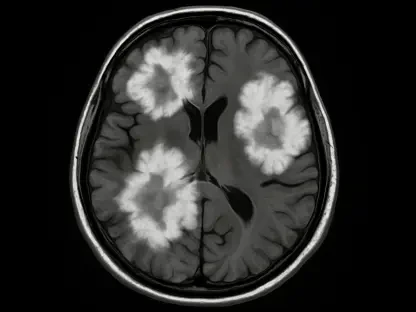As we dive into the critical topic of healthcare funding, I’m thrilled to speak with James Maitland, a seasoned expert in healthcare policy and hospital finance. With years of experience analyzing the intricacies of Medicaid funding and the operational challenges faced by safety-net hospitals, James offers unparalleled insight into how recent legislative changes are impacting urban and rural healthcare facilities. Today, we’ll explore the disproportionate burden of Medicaid cuts on urban safety-net hospitals, the financial pressures they face, and the broader implications for patient care and policy.
Can you start by explaining what a safety-net hospital is and why they are so vital to urban communities?
Safety-net hospitals are the backbone of healthcare for many urban communities. They’re facilities that provide care to everyone, regardless of their ability to pay, often serving a high number of low-income, uninsured, or underinsured patients. In cities, where poverty can be more concentrated and diverse populations face barriers to care, these hospitals are lifelines. They differ from other hospitals because a huge chunk of their revenue—sometimes over 50%—comes from Medicaid, and they handle a lot of uncompensated care, meaning they don’t get paid for many of the services they provide. Without them, millions would have nowhere to turn for emergency care, chronic disease management, or even basic health services.
Why do you think urban safety-net hospitals are more vulnerable to Medicaid cuts compared to rural ones, based on recent analyses?
The recent data showing 85% of the most vulnerable hospitals being in urban areas didn’t surprise me much. Urban safety-net hospitals often serve a much larger volume of patients, which means they’re more dependent on Medicaid reimbursements to keep the lights on. Unlike some rural hospitals, which might qualify for federal programs that boost reimbursement rates, urban facilities don’t always have that cushion. They’re also dealing with higher operational costs—think staffing, infrastructure, and technology—in densely populated areas. So when Medicaid funding gets slashed, the financial hit is immediate and severe for them.
Can you walk us through the specific Medicaid cuts introduced by recent legislation and how they’re affecting hospitals?
Certainly. The recent One Big Beautiful Bill Act introduced some sweeping changes to Medicaid. It imposes work requirements for some beneficiaries, meaning if they don’t meet certain employment criteria, they lose coverage. That directly shrinks the pool of insured patients, leaving hospitals with more unpaid bills. Additionally, the law restricts provider taxes, which are fees states levy on healthcare providers to fund their share of Medicaid. With those restrictions, states are struggling to come up with the money, and hospitals are seeing reduced payments. It’s a double whammy—fewer insured patients and less funding per patient.
How do you see the potential increase in uninsured individuals impacting urban safety-net hospitals?
The Congressional Budget Office predicts millions more will become uninsured due to these cuts, and urban safety-net hospitals will bear the brunt. When patients lose coverage, hospitals still treat them—often in emergencies—but they don’t get paid. That’s uncompensated care, and it’s a massive financial drain. For urban hospitals already operating on thin margins, this could force tough decisions like cutting back on services such as maternity care or mental health programs, or even closing entire departments. It’s not just a budget issue; it’s a public health crisis waiting to happen.
Congress has prioritized rural hospitals with a $50 billion rural health fund. Do you think this approach overlooks the needs of urban safety-net hospitals?
Absolutely, it feels like urban hospitals are being sidelined. I understand why rural hospitals get attention—many are at risk of closing, and when they do, entire communities lose access to care. But focusing a huge fund solely on rural areas ignores the fact that urban safety-net hospitals serve far more people and are just as financially strained by these cuts. The rural health fund is a Band-Aid for one part of the system while the other is bleeding out. Policymakers might be responding to political pressures or the narrative of rural decline, but the data shows urban hospitals need just as much, if not more, support.
Many vulnerable urban hospitals are also major teaching hospitals or owned by private equity firms. How do these factors influence their ability to weather funding cuts?
That’s a critical point. Teaching hospitals, which train the next generation of doctors, have added costs—think faculty salaries, resident stipends, and specialized equipment. Medicaid cuts hit them harder because they can’t easily scale back those expenses without compromising education or care quality. On the other hand, hospitals owned by private equity firms might face pressure to prioritize profits over patient care. These firms could push for cost-cutting measures like layoffs or service reductions, which might keep the hospital afloat financially but at the expense of its mission to serve the community. Both scenarios add layers of complexity to an already dire situation.
What is your forecast for the future of safety-net hospitals if these Medicaid cuts persist without additional support?
If these cuts continue without intervention, I’m deeply concerned we’ll see a wave of closures or drastic service reductions, especially in urban areas. Safety-net hospitals are already stretched thin, and without a reversal of these cuts or new funding mechanisms—like restoring disproportionate share hospital payments—we’re looking at a healthcare desert in some cities. Patients will suffer, with longer wait times, reduced access to specialty care, and worse health outcomes. I think we’re at a tipping point, and policymakers need to act fast to prevent a collapse that would be felt across the entire healthcare system.









